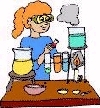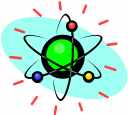
Worksheets and No Prep Teaching Resources
Reading Comprehension Worksheets
Matter

Matter
 Worksheets and No Prep Teaching Resources Reading Comprehension Worksheets Matter |
 Matter |
| edHelper's suggested reading level: | grades 7 to 9 | |
| Flesch-Kincaid grade level: | 7.08 |
| Print Atoms (font options, pick words for additional puzzles, and more) |
| Quickly print reading comprehension |
| Print a proofreading activity |
|
Atoms
By Sharon Fabian |

|
 1 The really strange thing about atoms is that most of us will never see one. Ever. Atoms are so small that it's impossible to see one with just our eyes. In fact, atoms are so small that it's impossible to see one with any ordinary microscope.
1 The really strange thing about atoms is that most of us will never see one. Ever. Atoms are so small that it's impossible to see one with just our eyes. In fact, atoms are so small that it's impossible to see one with any ordinary microscope. |
Create Weekly Reading Books
Prepare for an entire week at once! |
| Leave your feedback on Atoms (use this link if you found an error in the story) |
 |
Matter
|
 |
High School Reading Comprehensions and High School Reading Lessons
|
 |
Science
|